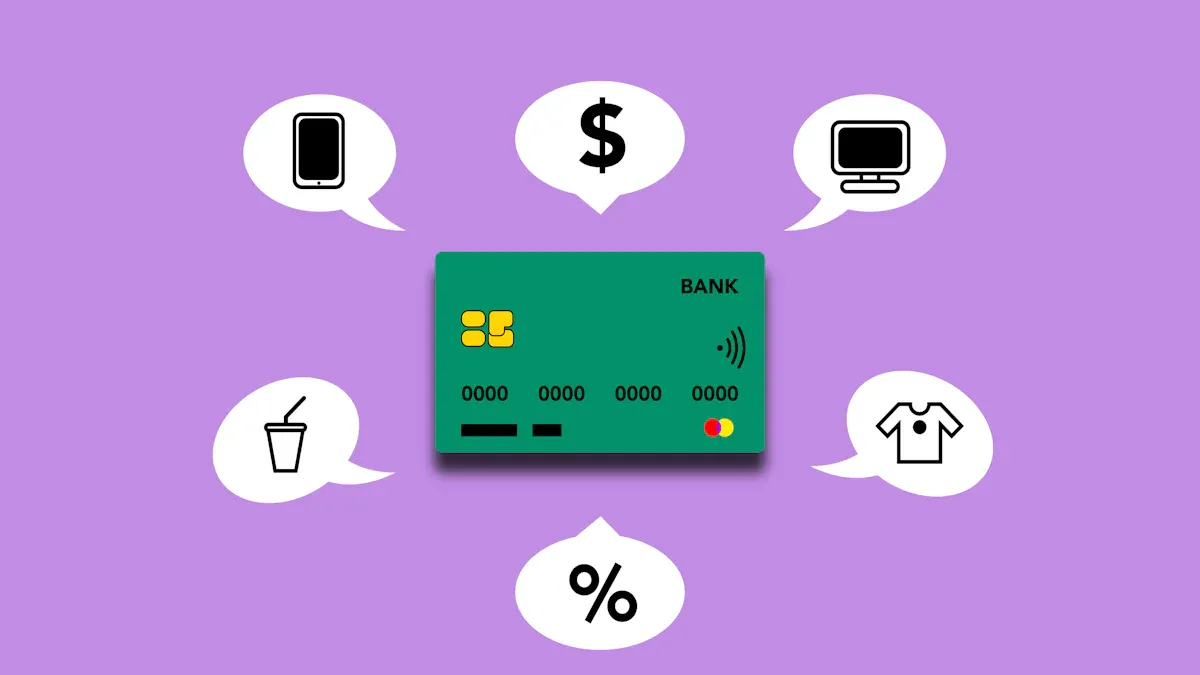- EasyCard
- Trade
- Help
- Announcement
- Academy
- SWIFT Code
- Iban Number
- Referral
- Customer Service
- Blog
- Creator
Wire Transfer vs ACH: Which Is Better for Cross-Border Remittance?

Image Source: unsplash
Choosing the right payment method is crucial in cross-border remittance. Wire transfer is a fast way to move funds, often used for high-value or time-sensitive transactions. Simply put, wire transfer moves money directly from one bank account to another through the banking network, ideal for urgent payments. However, it may not always be the best choice. For example, Ms. Yao found that wire transfers sometimes took longer to clear when paying a deposit urgently and opted for a faster alternative.
In contrast, ACH (Automated Clearing House) transfers are a low-cost electronic payment method better suited for small, non-urgent payments. They process payments in batches, reducing costs but resulting in longer transfer times. Therefore, you should weigh the pros and cons of each method to optimize your cross-border remittance experience.
Key Points
- Wire transfer suits urgent, large payments and typically clears within 1-2 business days for quick fund transfers.
- ACH transfers have low or no fees, ideal for small and recurring payments.
- When choosing, consider processing speed and cost—wire transfer for time-sensitive transactions, ACH for cost-effective payments.
- Wire transfers offer high security, with banks performing strict identity verifications.
- BiyaPay offers efficient wire transfer services with same-day clearance to improve cross-border remittance.
Core Differences Between Wire Transfer and ACH
Processing Speed Comparison
Speed is often the top concern in cross-border remittance. Wire transfers clearly have the edge—they typically complete domestic transfers on the same day, and international transfers within 1-2 business days. ACH transfers take longer, usually 1-3 business days domestically, and 3-5 days internationally. This difference is mainly due to processing mechanisms: wire transfers are real-time, ACH uses batch processing.
| Transfer Method | Domestic Arrival Time | Cross-Border Arrival Time |
|---|---|---|
| Wire Transfer | Same day | 1-2 business days |
| ACH Transfer | 1-3 business days | 3-5 business days |
For urgent payments like supplier invoices or high-value deals, wire transfer is the better choice.
Cost Comparison
Cost is another key factor. Wire transfer fees usually range from $20 to $80, depending on the bank and amount. ACH transfers have significantly lower fees and are sometimes free, making them ideal for low-cost needs.
| Feature | Wire Transfer | ACH Transfer |
|---|---|---|
| Fees | Usually high | Usually low or free |
If you want to save on small payments like subscriptions or recurring bills, ACH is more attractive.
Usage Scenario Comparison
Wire and ACH transfers also differ in use cases. Wire transfers are suited for large, urgent payments, such as international trade settlements or high-net-worth transfers. ACH transfers fit small, non-urgent recurring payments like payroll or subscriptions.
| Feature | Wire Transfer | ACH Transfer |
|---|---|---|
| Suitability | Large, urgent payments | Low-cost recurring payments |
| Limits | Generally no strict limits | Daily limits usually $5,000-$25,000 |
Understanding these differences helps you pick the right method. Wire transfers excel in speed and security for large payments; ACH shines for low-cost, repetitive payments.
What Is Wire Transfer and Its Pros & Cons in Cross-Border Remittance?

Image Source: pexels
Advantages of Wire Transfer
Wire transfer moves funds directly via the banking network, ideal for large and urgent cross-border payments. Its key benefits:
- Fast: Domestic transfers often complete same day; international transfers in 1-2 business days, perfect for time-sensitive deals.
- Secure: Banks conduct strict identity and funds verification.
- Wide applicability: Works almost everywhere for individuals and businesses.
- Flexible: Usually no strict amount limits, suited for large, infrequent transfers like trade settlements or asset moves.
Data shows direct payment methods like wire transfer and letters of credit dominate large, infrequent transactions. Wire transfer is also effective for smaller payments, making it vital in traditional import/export trade.
Disadvantages of Wire Transfer
Despite speed and security, wire transfers have downsides:
- High fees: Typically $20-$80 per transfer, which can be costly for small payments.
- Bank dependency: Transfers rely on bank working hours, affected by time zones.
- Strict info requirements: Precise beneficiary and bank details needed; errors cause delays.
These limitations make wire transfers less flexible in some contexts, where ACH or others might be better.
Features and Pros & Cons of ACH Transfers in Cross-Border Remittance

Image Source: unsplash
Advantages of ACH Transfer
ACH transfers are popular for low cost and efficiency. Key benefits:
- Low fees: Usually much cheaper or free compared to wire.
- Great for recurring payments: Supports batch processing, ideal for payroll, subscriptions.
- Convenient: Easy to use without complex steps or extra accounts.
- Secure: Uses encryption and multiple verification layers.
ACH excels domestically, favored by businesses and individuals for cost and efficiency.
Disadvantages of ACH Transfer
In cross-border remittance, ACH has limits:
- Longer processing: Batch mode means 1-3 days domestically, 3-5 days internationally.
- Less transparency: Multiple intermediaries reduce fee and status visibility.
- Complex processes: Different countries’ rules complicate ACH, lowering efficiency.
- Hidden costs: While fees may be low, exchange markups and intermediaries add to total cost. Average cross-border cost can reach 6.25%.
These factors make ACH less ideal for urgent or large payments requiring transparency.
Practical Recommendations
Urgent Payment Scenario
For urgent payments, speed is crucial. Whether a company needs to settle invoices quickly or an individual must pay a deposit, fast transfers matter. Wire transfer is optimal here.
Its real-time processing enables quick fund movement—same-day domestic, 1-2 days cross-border. For example, a large manufacturer reduced payment time from 3 days to 1 hour using smart payment solutions, improving cash flow.
Wire transfers also offer global coverage and security for urgent needs.
Low-Cost Payment Scenario
ACH suits low-cost needs—often free or very cheap, great for small or recurring payments like payroll or subscriptions. Batch processing cuts per-transaction costs, simplifying payments.
ACH’s security is trusted, using encryption and multi-factor authentication.
Other Special Cases
For complex needs like cross-border financing or reconciliation, choosing the right method depends on multiple factors.
For example, a company used Yuexinrong platform for reconciliation and successfully released 30 million RMB cross-border financing.
| Case | Key Element | Data Support |
|---|---|---|
| Southbound Cross-Border Verification | Uploading reconciliation hashes via Yuexinrong | Released RMB 30 million financing, resolving info asymmetry |
In such cases, wire transfer’s speed and transparency may suit financing, while ACH’s batch reconciliation aids efficiency.
How BiyaPay Enhances Cross-Border Remittance
BiyaPay Wire Transfer Advantages
BiyaPay offers efficient, secure wire transfers for cross-border remittance. Its advanced electronic payment system reduces time delays, often enabling same-day send and receive to meet urgent needs.
Key advantages:
- Boosted efficiency: Streamlined payment processes reduce banking delays.
- Cost saving: Automated finance cuts manual errors and operating expenses.
- High security: Strong encryption and two-factor authentication protect payments.
- Improved user experience: Convenient methods speed transactions, enhancing satisfaction.
BiyaPay’s wire transfers suit SMEs and individuals with frequent payments.
BiyaPay vs ACH Advantages
Compared to ACH, BiyaPay’s wire transfers are faster and more flexible. ACH takes 1-3 days; BiyaPay supports same-day arrival, shortening fund turnover.
| Feature | BiyaPay Wire Transfer | ACH Transfer |
|---|---|---|
| Arrival | Same day | 1-3 business days |
| Fees | Transparent, low | Low but with hidden costs |
| Security | Strong encryption & 2FA | Encrypted but less transparent |
| Flexibility | No amount limits | Daily limits usually $5K-$25K |
BiyaPay delivers faster, safer remittance without complex steps or hidden fees.
Other Innovations by BiyaPay
Beyond wire transfers, BiyaPay offers:
- Multi-asset trading: 30+ fiat and 200+ digital currencies in real-time.
- Offshore account-free stock trading: Trade US and HK stocks via USDT directly.
- Wealth management: Up to 5.48% annual returns for crypto-fiat arbitrage.
- Low-threshold spot trading: Fast currency exchange with high liquidity.
These features boost remittance convenience and provide investment opportunities via a single account.
Wire transfers and ACH each have unique strengths. Wire transfers suit urgent, large payments needing speed and security. ACH is cost-effective for small, recurring payments.
Case study: Cardholder A completed tuition payment via cross-border payment platform, showing the complexity of cross-border payments. Choosing the right method simplifies processes and boosts efficiency.
BiyaPay offers innovative solutions allowing users to pick the best method for a smoother global remittance experience.
FAQ
Which is safer: wire transfer or ACH?
Both are secure. Wire transfers use bank networks with strict identity and funds checks, offering higher security. ACH relies on encryption and verification, suitable for small payments.
Why are wire transfer fees higher than ACH?
Wire transfers involve real-time bank processing and manual checks plus international network costs, raising fees. ACH batch processes automatically, lowering costs.
What scenarios suit ACH transfers?
ACH suits small, non-urgent payments like payroll, subscriptions, or recurring bills. Its low cost and batch mode appeal to businesses and individuals.
Are wire transfers limited in amount?
Wire transfers generally have no strict limits, ideal for large payments like trade or asset moves. ACH usually caps daily transfers between $5,000 and $25,000.
How does BiyaPay improve cross-border remittance?
BiyaPay offers same-day wire transfers, supports 30+ fiat and 200+ digital currencies in real-time exchange. Its low fees and strong security make remittance faster and easier.
*This article is provided for general information purposes and does not constitute legal, tax or other professional advice from BiyaPay or its subsidiaries and its affiliates, and it is not intended as a substitute for obtaining advice from a financial advisor or any other professional.
We make no representations, warranties or warranties, express or implied, as to the accuracy, completeness or timeliness of the contents of this publication.




Contact Us
Company and Team
BiyaPay Products
Customer Services
is a broker-dealer registered with the U.S. Securities and Exchange Commission (SEC) (No.: 802-127417), member of the Financial Industry Regulatory Authority (FINRA) (CRD: 325027), member of the Securities Investor Protection Corporation (SIPC), and regulated by FINRA and SEC.
registered with the US Financial Crimes Enforcement Network (FinCEN), as a Money Services Business (MSB), registration number: 31000218637349, and regulated by FinCEN.
registered as Financial Service Provider (FSP number: FSP1007221) in New Zealand, and is a member of the Financial Dispute Resolution Scheme, a New Zealand independent dispute resolution service provider.



















